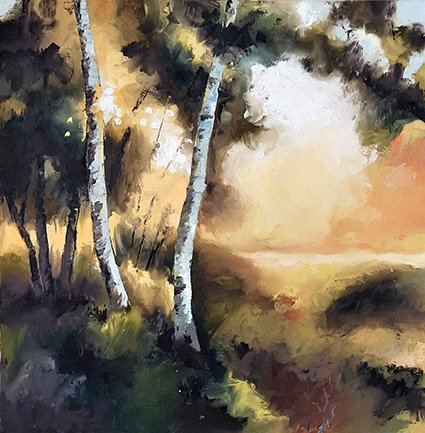Workshop: Roger Dellar - Discovering Light and Shade in the Landscape
Work in progress.
Roger began with a demo to recap the teaching points from his club night.
He started by making decisions about his colours, mixing his paints on the palette. Then, after considering the shapes and general composition, he painted in the darks using the thinnest paint. After this, he added the medium tones, then the lightest, gradually building up the thickness of the paint. He kept his brushstrokes loose but decisive, using a fairly large brush until the final stages when he added detail with a fine rigger.
He stressed that it was important to step back, turn your picture upside down and look at the arrangement of shapes as a whole composition.
He was generous with his advice to all of the artists in the room. He advised those working in acrylic to cover their boards with retarder to slow the drying time. He also suggested that when editing work back in the studio, chalk was useful for practising marks on a dry surface.
An excellent, highly enjoyable workshop.
Q: So, how many layers of oil paint can you stack, one on top of the other?
A: A lot…
At the end of our workshop, a few Works in Progress:
Woodland bathed in golden sunlight.
A path through the woods.
Trees casting long shadows.
A frosty walk by the Stour.








